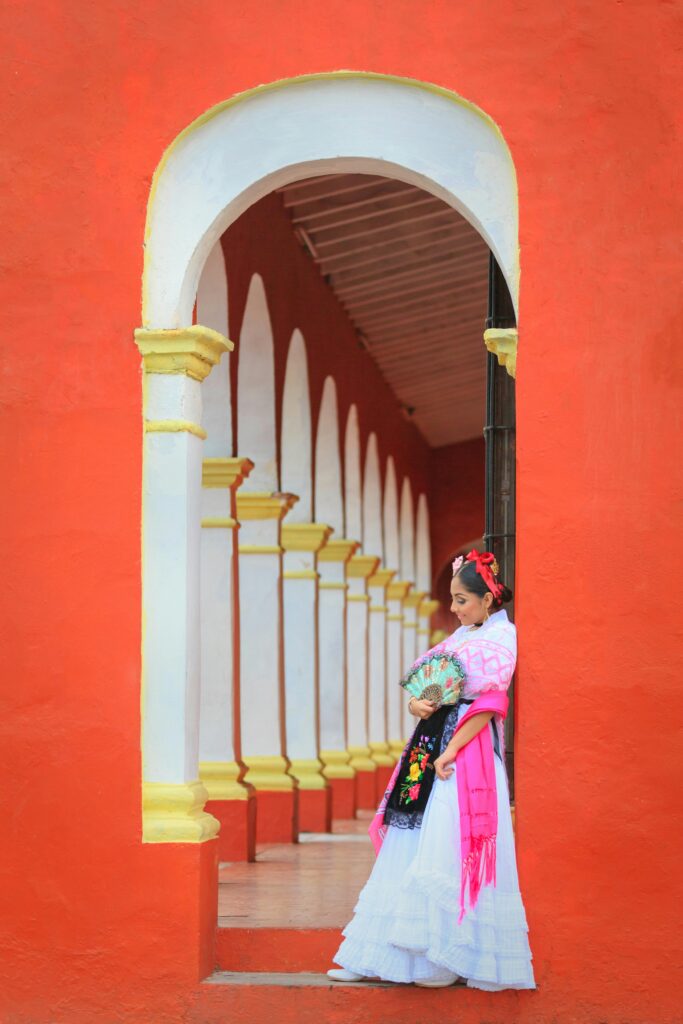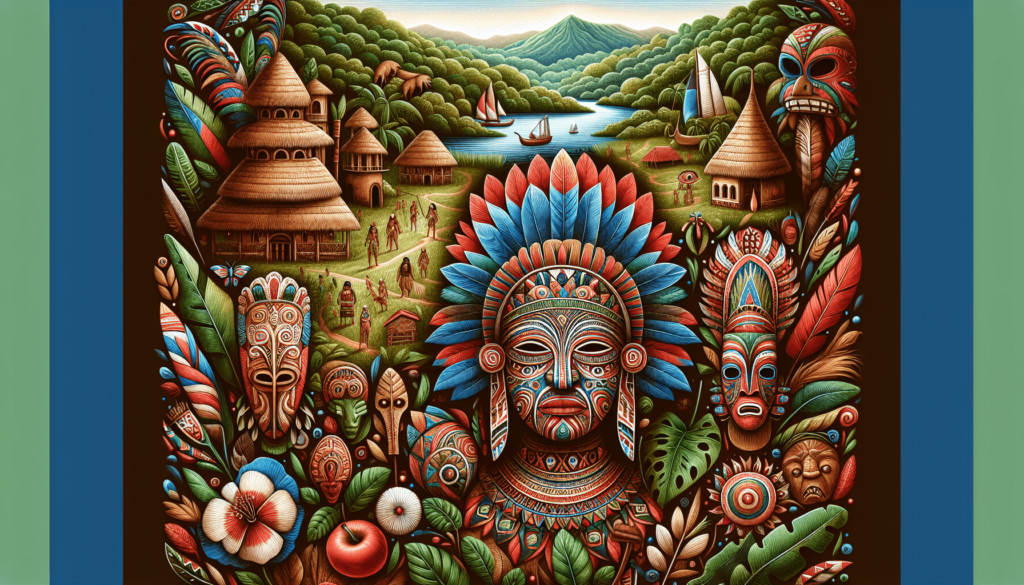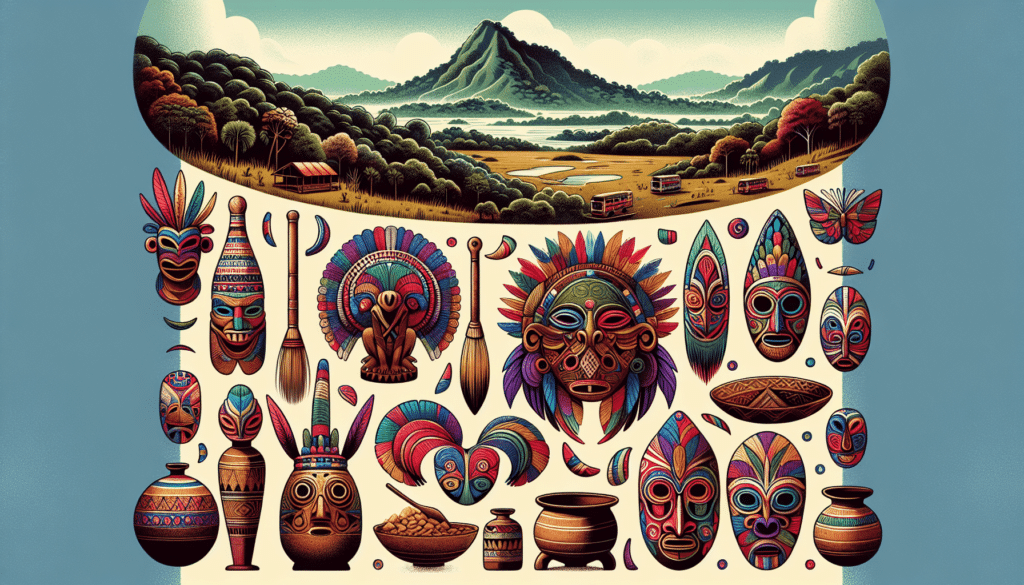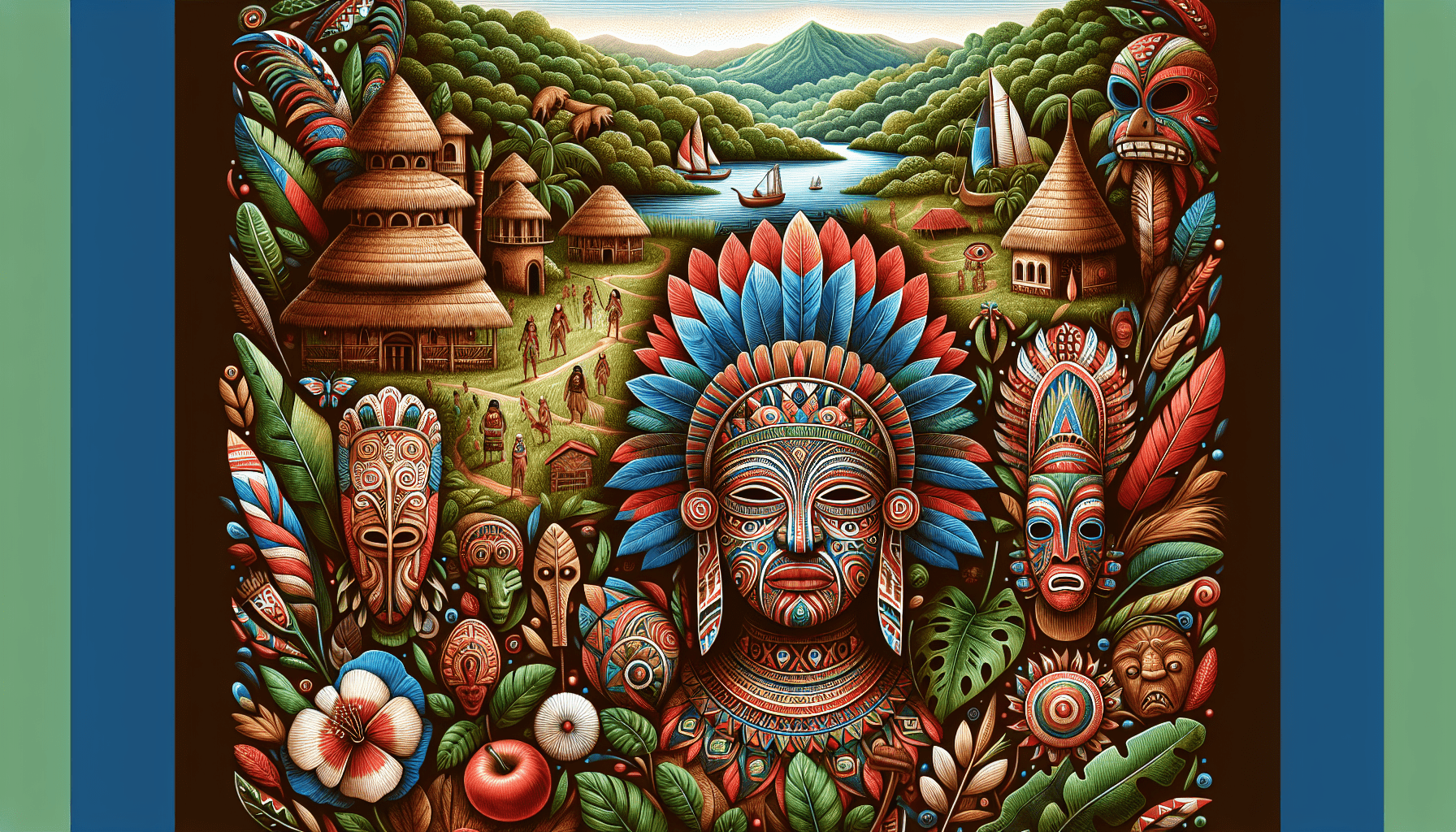Imagine immersing yourself in the vibrant and captivating cultures of Costa Rica. From the lush rainforests to the stunning coastlines, this tropical paradise offers a unique opportunity to explore the rich and diverse indigenous cultures that have thrived for centuries. With countless ways to engage with the local communities, you can delve into their traditions, customs, and way of life. Whether it’s through craft workshops, traditional dance performances, or visiting sacred sites, the top ways to discover the indigenous cultures of Costa Rica promise an unforgettable and eye-opening experience.

History of Indigenous Cultures in Costa Rica
Costa Rica has a rich and diverse history of Indigenous cultures that stretches back thousands of years. The early Indigenous societies in Costa Rica formed complex social structures and had developed agricultural practices. These societies flourished before the arrival of Spanish colonization in the 16th century.
Early Indigenous Societies
Before the arrival of the Spanish colonizers, several Indigenous groups inhabited the region now known as Costa Rica. These groups included the Boruca, Bribri, Cabecar, Chorotega, Guaymí, Maleku, and Terraba tribes. These tribes had distinct languages, customs, and traditions that played a significant role in shaping their unique societies.
Effect of Spanish Colonization
The arrival of the Spanish conquistadors in Costa Rica in the 16th century had a profound impact on the Indigenous cultures of the region. The Spanish colonization brought about major changes, including the introduction of Christianity, forced labor, and the dismantling of traditional Indigenous governance systems. The Indigenous peoples were subjected to exploitation and cultural assimilation, leading to the erosion of their traditional way of life.
Modern-Day Recognition and Acknowledgment
In recent years, there has been a growing recognition and acknowledgment of the Indigenous cultures in Costa Rica. Efforts have been made to preserve and promote their rich heritage, language, and traditions. The Costa Rican government has taken steps to protect Indigenous lands and provide support for Indigenous communities. This recognition has helped raise awareness about the importance of preserving Indigenous cultures and their contributions to the country’s history.
Key Indigenous Tribes of Costa Rica
Costa Rica is home to several key Indigenous tribes, each with its own unique language, customs, and way of life. These tribes have played a vital role in shaping the cultural landscape of Costa Rica.
Boruca Tribe
The Boruca tribe is known for its vibrant and intricate mask-making tradition. These masks are beautifully crafted using wood, and they play a significant role in Boruca ceremonies and cultural celebrations. The art of mask-making is passed down from generation to generation, preserving the tribe’s rich cultural heritage.
Bribri Tribe
The Bribri tribe, located in the Talamanca region of Costa Rica, is known for its skilled basket-weaving techniques. The Bribri people use natural materials such as palm leaves and fibers to create beautiful and intricate baskets, which have both practical and ceremonial purposes. Basket weaving is not only a cultural tradition but also a source of income for the Bribri community.
Cabecar Tribe
The Cabecar tribe is one of the largest Indigenous groups in Costa Rica. They have a deep connection to the land and are skilled in sustainable farming practices. Agriculture plays a vital role in the Cabecar community, providing them with food and economic stability. The tribe’s traditional agricultural practices have been passed down through generations, preserving their cultural identity and sustainable way of life.
Chorotega Tribe
The Chorotega tribe is known for its intricate pottery-making techniques. The Chorotega people create unique clay vessels and figurines, adorned with intricate designs and vibrant colors. This art form has been passed down through generations and is deeply ingrained in the Chorotega culture. Pottery-making serves as a means of preserving their heritage and showcasing their artistic skills.
Guaymí Tribe
The Guaymí tribe, also known as the Ngäbe, is located in the remote regions of southern Costa Rica. The tribe has a strong connection to the natural environment and relies on sustainable farming practices. They are skilled in traditional agricultural methods such as slash-and-burn farming and cultivating staple crops like corn, beans, and yucca. The Guaymí people’s agricultural practices are essential to their subsistence and cultural preservation.
Maleku Tribe
The Maleku tribe is known for its beautiful handicrafts, including intricate beaded jewelry and woven textiles. The Maleku people use natural materials such as seeds, fibers, and feathers to create their crafts, which showcase their artistic skills and cultural heritage. These handicrafts are not only a source of income but also a way to keep their traditions alive and pass them on to future generations.
Terraba Tribe
The Terraba tribe is one of the largest Indigenous groups in Costa Rica. They have a strong connection to the land and are skilled in traditional farming practices. The Terraba people cultivate a variety of crops, including corn, beans, and plantains, using sustainable farming methods. They preserve their cultural identity through their agricultural practices and by passing down traditional knowledge from elders to younger generations.
Traditional Indigenous Arts and Crafts
The Indigenous cultures of Costa Rica have a rich tradition of arts and crafts, which have been passed down through generations. These crafts not only showcase the artistic skills of the tribes but also serve as a means of cultural preservation and economic sustenance.
Mask Making in Boruca
The Boruca tribe is renowned for its mask-making tradition. The masks are intricately carved from balsa or cedar wood and painted in vibrant colors. Each mask has its own symbolic meaning and is used in traditional ceremonies and festivals. The art of mask-making is passed down from master craftsmen to apprentices, ensuring the preservation of this unique cultural practice.
Basket Weaving of the Bribri
The Bribri tribe is known for its skillful basket-weaving techniques. The Bribri people use natural materials such as palm leaves, fibers, and dyes made from plants to create baskets of various shapes and sizes. These baskets have both practical and ceremonial purposes and are adorned with intricate designs that reflect the tribe’s connection to nature. Basket weaving is a significant cultural tradition for the Bribri people and serves as a source of income for many families.
Pottery in Guaitil
The Chorotega tribe, particularly the community of Guaitil, is renowned for their pottery-making skills. The Chorotega people create exquisite clay vessels and figurines, using traditional techniques that have been passed down through generations. The pottery is adorned with intricate designs and vibrant colors, representing the tribe’s cultural heritage. Guaitil has become a center for pottery-making, attracting visitors who appreciate the artistry and cultural significance of these unique creations.
Indigenous Languages of Costa Rica
The Indigenous tribes of Costa Rica have their own distinct languages, which are an integral part of their cultural identity. These languages, although threatened by the dominance of Spanish, play a vital role in preserving Indigenous traditions and maintaining a sense of community and belonging.
Preservation of Native Languages
Efforts have been made in recent years to preserve and revive the native languages of Costa Rica’s Indigenous tribes. Bilingual education programs have been established to teach both Spanish and Indigenous languages in schools, ensuring that younger generations have the opportunity to learn and embrace their ancestral languages. Language preservation initiatives also include the documentation and recording of Indigenous languages, helping to ensure their survival.
The Importance of Language in Cultural Identity
Language is an essential component of cultural identity, and this holds true for the Indigenous tribes of Costa Rica. For many Indigenous people, language is intrinsically linked to their sense of belonging and heritage. It is through their native languages that the tribes pass down their traditional knowledge, stories, and cultural practices. Preserving Indigenous languages is crucial not only for the individual tribes but also for the cultural diversity and heritage of the entire country.
Ceremonies and Rituals Practices
Spiritual rituals and ceremonies play a significant role in the daily lives of the Indigenous communities in Costa Rica. These practices are deeply rooted in their cultural and spiritual beliefs and provide a sense of connection to their ancestors and the natural world.
Spiritual Rituals and Beliefs
The Indigenous tribes of Costa Rica have rich spiritual beliefs that are reflected in their ceremonies and rituals. These rituals often involve offerings, prayer, dance, and music. Spiritual leaders play a crucial role in guiding the community in these practices, ensuring the preservation of their ancestral traditions. These ceremonies provide a sense of unity and spirituality within the tribes, reinforcing their cultural identity.
Coming-of-Age Ceremonies
Coming-of-age ceremonies are an important milestone in the lives of Indigenous young people in Costa Rica. These ceremonies mark the transition from childhood to adulthood and are often accompanied by various rituals and teachings. The youth are initiated into the responsibilities and roles of adulthood, guided by their elders and spiritual leaders. Coming-of-age ceremonies are not only a celebration but also a way to pass down ancestral knowledge and ensure the continuity of Indigenous cultural practices.
Indigenous Cuisine in Costa Rica
Indigenous cuisine in Costa Rica showcases a harmonious blend of traditional cooking methods and local ingredients. These unique culinary traditions have been passed down through generations and continue to be an integral part of the Indigenous culture.
Traditional Indigenous Dishes
Traditional Indigenous dishes in Costa Rica feature a variety of ingredients that are locally sourced and reflect the Indigenous communities’ connection to the land. Corn, beans, yucca, plantains, and various fruits are common staples in Indigenous cuisine. Dishes such as “gallo pinto” (rice and beans), tortillas, and hearty stews are prevalent in Indigenous households. These traditional recipes not only provide sustenance but also serve as a way to preserve ancestral culinary traditions.
Importance of Agriculture in Indigenous Communities
Agriculture holds immense importance in the lives of Indigenous communities in Costa Rica. Subsistence farming practices, passed down through generations, provide the tribes with a sustainable source of food and economic stability. The Indigenous people have a profound understanding of the land and its resources, practicing techniques such as slash-and-burn agriculture to cultivate crops. By maintaining their traditional agricultural practices, the Indigenous communities ensure the preservation of their cultural identity and a closer connection to the natural world.

Indigenous Reserves and Territory of Costa Rica
Costa Rica’s government has taken steps to protect the Indigenous lands and promote the well-being of Indigenous communities. These reserves serve as important spaces for the preservation of Indigenous cultures and the continuation of traditional practices.
Government Protection of Indigenous Lands
The Costa Rican government recognizes the importance of protecting Indigenous lands and has established several Indigenous reserves throughout the country. These reserves are designated areas where Indigenous communities can continue their traditional ways of life and have control over the resources within their territories. The government collaborates with Indigenous leaders to ensure the preservation of these lands and the rights of the Indigenous communities who reside in them.
Living Conditions in the Reserves
Life in the Indigenous reserves of Costa Rica can be challenging, with limited access to basic services and infrastructure. Despite this, the communities strive to maintain their cultural traditions and live in harmony with their natural surroundings. The government provides support and resources to improve living conditions within the reserves, including education, healthcare, and infrastructure development. Efforts are ongoing to address the unique needs and challenges faced by Indigenous communities and improve their overall well-being.
Education and Indigenous Knowledge
Preserving Indigenous knowledge and traditions is a vital aspect of ensuring the continuation of Indigenous cultures. Education initiatives focused on Indigenous communities play a crucial role in this process.
Preservation of Indigenous Knowledge and Traditions
Efforts have been made to incorporate Indigenous knowledge and traditions into the education system in Costa Rica. This includes teaching Indigenous languages, cultural practices, and traditional ecological knowledge. By valuing and integrating Indigenous knowledge, younger generations are encouraged to learn and appreciate their cultural heritage, fostering a sense of pride and identity.
Indigenous Education Initiatives
Various programs and initiatives have been established to support Indigenous education in Costa Rica. Bilingual education programs aim to teach both Spanish and Indigenous languages, ensuring that students are proficient in their ancestral language while also acquiring skills necessary for the modern world. Scholarships and support systems are in place to facilitate access to education and higher learning for Indigenous youth. These initiatives contribute to the preservation and promotion of Indigenous cultures and knowledge in Costa Rica.

Challenges Faced by Indigenous Communities in Costa Rica
Despite recognition and efforts to preserve Indigenous cultures, several challenges persist within the Indigenous communities of Costa Rica.
Land Disputes and Indigenous Rights
Land disputes are a significant challenge faced by Indigenous communities in Costa Rica. In some cases, Indigenous lands have been encroached upon or exploited for their natural resources without adequate consultation or consent. Indigenous rights advocates work tirelessly to ensure that these disputes are resolved and that the rights of Indigenous communities are respected.
Poverty and Economic Hardship
Many Indigenous communities in Costa Rica face high levels of poverty and economic hardship. Limited access to education, healthcare, and economic opportunities contributes to these challenges. Efforts are being made to create sustainable economic development projects within the Indigenous communities, providing income-generating opportunities and improving their overall well-being.
Cultural Preservation Versus Modernization
The balance between cultural preservation and modernization is an ongoing challenge for Indigenous communities in Costa Rica. As younger generations are exposed to external influences and modern lifestyles, there is a risk of losing traditional knowledge, language, and practices. Efforts are being made to address this challenge by promoting cultural pride, integrating traditional practices into daily life, and fostering intergenerational learning.
Contributions of Indigenous Culture to Costa Rica
Indigenous culture has made significant contributions to the history, identity, and art of Costa Rica.
Environmental Preservation Efforts
Indigenous communities in Costa Rica have a deep connection to the natural environment and possess traditional ecological knowledge. They have played a crucial role in the preservation of Costa Rica’s biodiversity and ecosystems. Indigenous farming practices, such as agroforestry and sustainable agriculture, contribute to the conservation of the land and promote ecological balance. Their knowledge and practices have influenced the country’s approach to environmental conservation and sustainability.
Influence on National Identity and Art
Indigenous cultures of Costa Rica have had a profound influence on the national identity and art of the country. Traditional crafts, art forms, and cultural practices are celebrated and embraced as a vital part of the country’s rich heritage. Indigenous motifs and designs are often incorporated into contemporary art, fashion, and architecture, reflecting the enduring impact of Indigenous culture on Costa Rican society as a whole.
In conclusion, the Indigenous cultures of Costa Rica have a deep-rooted history and continue to play a significant role in shaping the country’s identity. Through their arts and crafts, languages, ceremonies, and culinary traditions, these communities contribute to the cultural diversity and heritage of Costa Rica. Efforts to preserve their cultures, protect their lands, and address the challenges they face are essential for ensuring the continued flourishing of Indigenous cultures in the country.







0 Comments